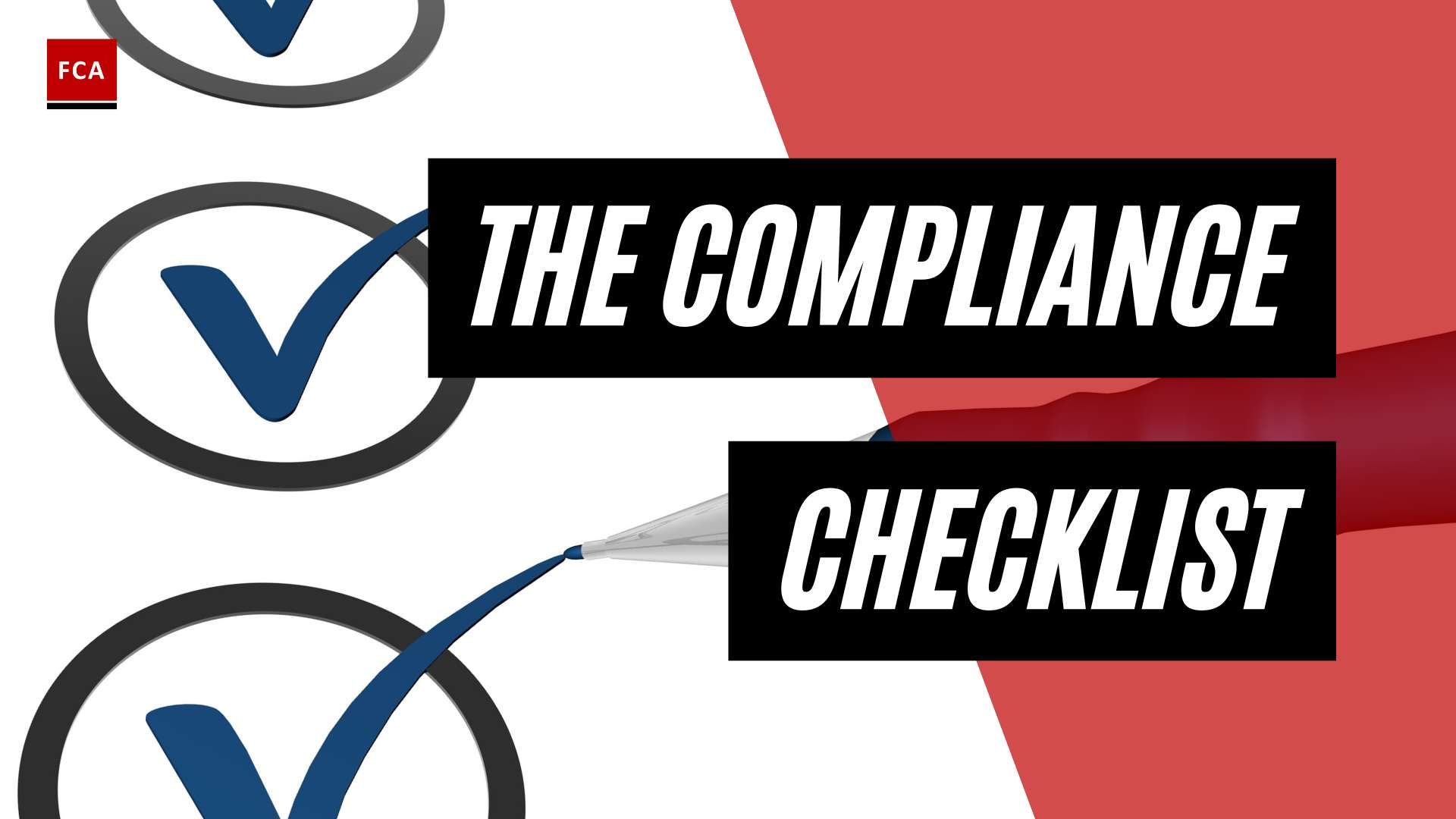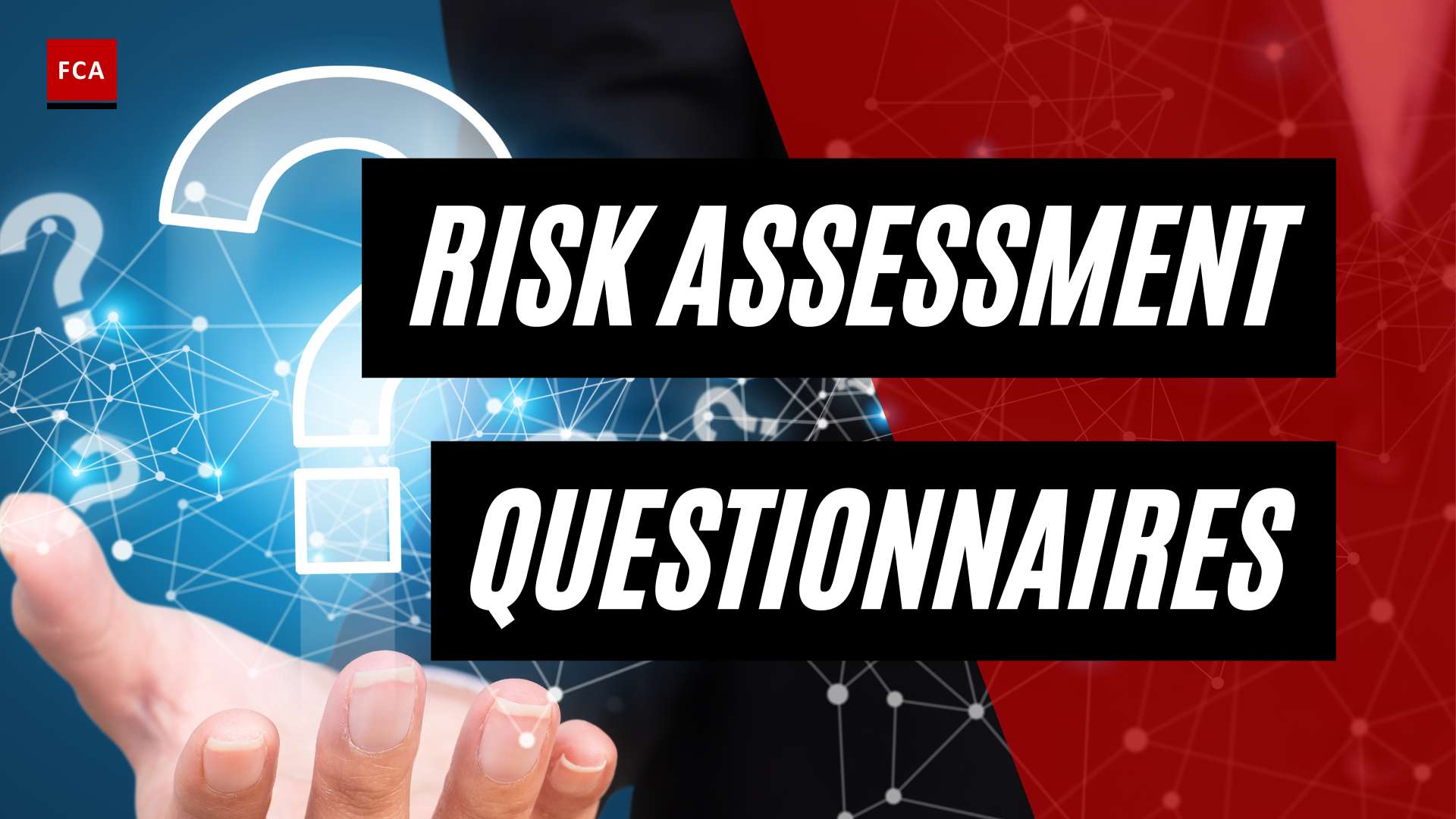AML Data Analysis Techniques
In the fight against money laundering and financial crimes, effective data analysis plays a pivotal role. AML data analysis techniques help organizations identify suspicious patterns, detect anomalies, and mitigate risks. By leveraging technology and analyzing vast amounts of data, businesses can strengthen their anti-money laundering efforts and comply with regulatory requirements.
Importance of AML Data Analysis
AML data analysis is crucial for identifying and preventing money laundering activities. It allows organizations to analyze customer transactions, monitor financial activities, and identify potential red flags. By examining patterns and anomalies in data, businesses can detect suspicious activities and take appropriate action to mitigate risks.
One of the key aspects of AML data analysis is conducting AML risk assessments. These assessments help businesses evaluate the likelihood of a customer’s involvement in money laundering or terrorist financing. They enable organizations to assess the risks associated with their customer base, products and services, transaction review, geography, and demographics. By evaluating these key risk indicators (KRIs), businesses can identify vulnerabilities and areas that may attract criminals and money launderers.
AML risk assessments classify clients as low, medium, or high risk based on the assessment results. This classification guides the monitoring of transactions, validation of identities, and filing of suspicious activity reports within an organization. It helps organizations prioritize their resources and focus on high-risk areas to effectively combat money laundering.
Conducting AML risk assessments is not only essential for mitigating risks and protecting businesses from involvement in money laundering but also a regulatory requirement. Laws such as the Bank Secrecy Act (BSA) necessitate the completion of AML risk assessments. Non-compliance with these regulations can result in substantial fines, penalties, and reputational damage. Other regulatory bodies, such as the Office of Foreign Assets Control (OFAC) and the Solicitors Regulation Authority (SRA), also stress the importance of AML risk assessments.
Key Risk Indicators in AML Data Analysis
When performing AML data analysis, it is crucial to consider key risk indicators (KRIs) to identify potential money laundering activities. These indicators help organizations evaluate the risks associated with their operations and customers. Common KRIs include:
-
Customer Base: Assessing the characteristics of customers, such as their geographic locations, industry sectors, and transaction volumes, can help identify high-risk customers or businesses.
-
Products and Services: Analyzing the types of products and services offered by an organization can highlight those that may be susceptible to money laundering activities.
-
Transaction Review: Monitoring and analyzing customer transactions can help detect unusual or suspicious patterns, such as frequent large cash deposits or rapid movement of funds.
-
Geography: Evaluating the geographic locations involved in transactions can identify regions known for high money laundering risks or jurisdictions with weak regulatory frameworks.
-
Demographics: Examining customer demographics, such as age, occupation, and income level, can provide insights into potential money laundering activities associated with specific groups.
By considering these key risk indicators in AML data analysis, organizations can enhance their ability to detect and prevent money laundering activities. Implementing effective AML data analysis techniques and incorporating these indicators into risk assessment processes strengthens an organization’s compliance efforts and safeguards against financial crimes.
To facilitate AML data analysis, various technologies and tools are available. The next section will delve into the role of machine learning and AI, AML software tools, and data visualization techniques in the context of AML data analysis.
Technology in AML Data Analysis
As technology continues to advance, it plays a crucial role in enhancing the effectiveness and efficiency of Anti-Money Laundering (AML) data analysis. In this section, we will explore the role of machine learning and AI, the use of AML software tools, and the importance of data visualization techniques.
Role of Machine Learning and AI
Machine learning and AI technologies are increasingly being applied in AML data analysis, revolutionizing the way suspicious activities are identified and investigated. These technologies enable the automated processing of large volumes of data, allowing for faster and more accurate identification of potential money laundering activities. By leveraging algorithms and models, machine learning and AI can detect patterns, anomalies, and potential risks within vast amounts of data, aiding in the efficient detection of suspicious activities and reducing false positives (SEON). The use of machine learning and AI in AML data analysis helps organizations stay one step ahead in the fight against money laundering.
AML Software Tools
Utilizing the right AML software tools is essential for effective data analysis and investigation. These tools streamline the analysis process, enhance the accuracy of results, and improve operational efficiency. Some popular AML software tools worth considering include Actimize, Alessa, and FICO Falcon, among others. Each tool offers unique features designed to meet the specific needs of organizations, such as transaction monitoring, customer due diligence, and watchlist screening. By leveraging AML software tools, organizations can enhance their data analysis capabilities and improve their overall AML compliance efforts (SEON).
Data Visualization Techniques
Effective data visualization techniques are crucial in AML data analysis as they facilitate better understanding and interpretation of complex data sets. These techniques help uncover hidden insights and relationships among entities, aiding in the identification of potential money laundering activities. By visualizing connections through tools such as link analysis, geospatial analysis, and network analysis, organizations can gain a comprehensive view of their data and detect suspicious patterns or behaviors. Data visualization techniques play a vital role in presenting information in a clear and actionable manner, enabling investigators to make informed decisions based on the visual representation of data (SEON).
Incorporating machine learning, AI technologies, utilizing AML software tools, and employing effective data visualization techniques are essential components of a robust AML data analysis strategy. By leveraging these technological advancements, organizations can improve the efficiency and accuracy of their AML efforts, enabling them to detect and prevent money laundering activities effectively. However, it’s important to remember that technology should always be complemented by continuous monitoring, updating of algorithms, and collaboration with industry stakeholders to stay ahead of evolving money laundering tactics (Gartner).
Best Practices for AML Data Analysis
To effectively combat money laundering and meet regulatory requirements, organizations must implement best practices for AML data analysis. These practices ensure compliance, promote continuous improvement, and enhance collaboration and information sharing.
Compliance with Regulatory Requirements
Compliance with regulatory requirements is a fundamental best practice in AML data analysis. Regulatory bodies such as the Bank Secrecy Act (BSA), Office of Foreign Assets Control (OFAC), and Solicitors Regulation Authority (SRA) emphasize the importance of AML risk assessments and ongoing compliance (Sanctions.io). Failure to conduct these assessments can result in substantial fines, penalties, and reputational damage associated with non-compliance.
To ensure compliance, organizations should conduct thorough risk assessments, implement appropriate policies and procedures, and establish effective internal controls. Risk assessments help identify and mitigate potential risks, while policies and procedures provide a framework for AML processes. Regular audits and reviews are also essential to assess the effectiveness of the AML program and identify areas for improvement (Sanctions.io).
Continuous Audits and Reviews
Continuous audits and reviews are crucial for maintaining an effective AML program. Regularly assessing the program’s health and making necessary updates are vital steps in preventing an organization’s involvement in money laundering activities. These audits help identify gaps, weaknesses, and emerging risks, allowing organizations to take proactive measures to address them.
By conducting audits and reviews, organizations can ensure that their AML program remains up-to-date and aligned with regulatory changes. This includes updating policies and procedures, enhancing staff training, and adopting new technologies and methodologies. Continuous improvement through audits and reviews is essential for staying ahead of evolving money laundering tactics and regulatory requirements.
Collaboration and Information Sharing
Collaboration and information sharing are key best practices in AML data analysis. Effective collaboration between financial institutions, regulatory authorities, and other stakeholders can significantly enhance AML efforts. AML software tools play a crucial role in facilitating secure data sharing and communication among organizations, enabling cooperative efforts to combat money laundering and terrorist financing activities.
Collaboration allows for the exchange of insights, best practices, and emerging trends, benefiting all parties involved. By sharing information on suspicious activities, known money laundering techniques, and emerging risks, organizations can enhance their collective knowledge and strengthen their AML capabilities. Collaboration can foster a proactive, united front against money laundering, increasing the effectiveness of AML efforts.
To summarize, the best practices for AML data analysis encompass compliance with regulatory requirements, continuous audits and reviews, and collaboration and information sharing. By adhering to these practices, organizations can maintain strong AML programs, mitigate risks, and contribute to global efforts in combating money laundering and financial crimes.
Challenges in AML Data Analysis
AML data analysis is a critical component of an effective anti-money laundering program. However, several challenges need to be addressed to ensure the accuracy and efficiency of the analysis. The key challenges in AML data analysis include evolving money laundering tactics, lack of cooperation and information sharing, resource and technology constraints, and cross-border and multi-jurisdictional compliance.
Evolving Money Laundering Tactics
Criminals constantly find new ways to launder money, making it challenging for financial institutions to detect and prevent such activities. These tactics include the use of shell companies, offshore accounts, and digital currencies to conceal the origin of funds. Additionally, complex transactions like layering and integration further complicate the tracing of the source of funds (Sanction Scanner).
To overcome this challenge, financial institutions must stay updated on emerging money laundering techniques and adopt advanced data analysis techniques, such as data mining, predictive analytics, statistical analysis, big data analysis, and network analysis. These techniques can help identify patterns and anomalies that may indicate potential money laundering activities (data mining techniques for AML, predictive analytics in anti-money laundering, big data analysis in AML, network analysis in anti-money laundering).
Lack of Cooperation and Information Sharing
The lack of cooperation and information sharing between financial institutions and regulatory authorities poses a significant challenge in AML data analysis. Concerns about legal liability and reputational risks often hinder effective collaboration. Financial institutions may be reluctant to share information due to these concerns. Moreover, regulatory authorities may lack the necessary resources or expertise to effectively analyze the information provided by financial institutions (Sanction Scanner).
To address this challenge, there is a need for enhanced cooperation and information sharing among financial institutions, regulatory authorities, and law enforcement agencies. Establishing secure channels for sharing information, fostering a culture of collaboration, and providing legal protections for institutions sharing information can help improve the effectiveness of AML data analysis.
Resource and Technology Constraints
Financial institutions often face resource and technology constraints when it comes to AML data analysis. Insufficient data on customers, transactions, or third parties, as well as a shortage of compliance officers and necessary resources, can hinder the detection and prevention of money laundering activities. This challenge is particularly prevalent in small and medium-sized companies.
To overcome resource and technology constraints, financial institutions should invest in robust AML software tools that can automate data analysis processes and provide comprehensive risk assessments. These tools can streamline compliance processes, reduce manual effort, and enable efficient allocation of resources. Additionally, continuous training and development programs can help enhance the skills of AML professionals and ensure they stay up-to-date with the latest industry trends and regulatory requirements.
Cross-Border and Multi-Jurisdictional Compliance
Managing AML compliance across different jurisdictions presents a significant challenge for banks and financial institutions. Each jurisdiction may have its own set of regulatory requirements, making it essential to ensure compliance across multiple regions. Additionally, increased customer diligence requirements and the need for extensive information gathering add complexity to the AML data analysis process (Sanction Scanner).
To address cross-border and multi-jurisdictional compliance challenges, financial institutions must establish robust risk assessment frameworks that consider the unique requirements of each jurisdiction. They should also implement effective data governance practices to ensure data accuracy and consistency across borders. Collaborating with regulatory authorities and industry peers can help in understanding and navigating the complexities of cross-border compliance.
Successfully overcoming these challenges in AML data analysis requires a comprehensive and proactive approach. By leveraging advanced analytics techniques, fostering collaboration and information sharing, investing in adequate resources and technology, and ensuring cross-border compliance, financial institutions can enhance the effectiveness of their AML programs and better detect and prevent money laundering activities.
Effective AML Program Analysis
To ensure the effectiveness of Anti-Money Laundering (AML) programs, thorough analysis is essential. This section explores the importance of analytics, continuous monitoring and updating, advanced analytics techniques, and collaboration and information sharing in AML program analysis.
Importance of Analytics
Utilizing analytics in AML program analysis allows financial institutions to make evidence-based decisions regarding resources, costs, and time spent on AML-related activities. Analytics provide valuable insights into the efficiency of compliance programs, helping justify the need for additional resources or assess the effectiveness of existing technology solutions. By analyzing detailed data, organizations can identify areas for improvement, optimize processes, and ensure regulatory compliance.
Continuous Monitoring and Updating
One of the best practices in AML data analysis is the continuous monitoring and updating of algorithms and models. Money laundering tactics are constantly evolving, and it is crucial to stay proactive and agile to combat new and emerging methods (Gartner). Regularly reviewing and updating models helps organizations adapt to changing patterns and behaviors, enhancing their ability to detect suspicious activities effectively.
Advanced Analytics Techniques
Financial institutions are increasingly adopting advanced analytics techniques to strengthen their AML data analysis. Techniques such as network analysis, anomaly detection, and predictive modeling enable organizations to identify complex money laundering patterns and behaviors that traditional rules-based systems may miss (Gartner). By leveraging these techniques, institutions can enhance their detection capabilities and proactively combat financial crimes.
Collaboration and Information Sharing
Collaboration and information sharing play a vital role in AML data analysis. By sharing information derived from AML program analyses with internal stakeholders, organizations can build business cases, affirm the effectiveness of compliance programs, and ensure the voice of the AML team is heard. Collaboration among financial institutions and regulators enables the collective detection of money laundering activities across different entities. This shared intelligence enhances detection capabilities and empowers the fight against financial crimes.
Incorporating these best practices into AML program analysis enables organizations to strengthen their anti-money laundering efforts. By leveraging analytics, continuously monitoring and updating models, utilizing advanced techniques, and fostering collaboration and information sharing, financial institutions can enhance their ability to detect and prevent money laundering activities effectively.
Importance of Data Quality in AML
When it comes to AML data analysis, the quality of data plays a critical role in ensuring accurate and effective results. Poor data quality can have significant impacts on the efficiency and effectiveness of anti-money laundering (AML) efforts. In this section, we will explore the importance of data quality in AML, including the impact of poor data quality, the need for data cleaning and governance, and the adoption of a holistic risk orchestration approach.
Impact of Poor Data Quality
The consequences of poor data quality in AML can be far-reaching. Inaccurate, incomplete, or inconsistent data can lead to erroneous analysis, false positives, and missed suspicious activities. The average company loses 12% of its revenue due to poor data quality, highlighting the financial impact of not following proper data quality practices. Inadequate data quality management can also impact customer retention and satisfaction levels, potentially resulting in the loss of customers and revenue for businesses (Data Ladder).
In the context of AML, poor data quality can hinder the ability to accurately identify potential money laundering activities and comply with regulatory requirements. Inconsistent data across systems can lead to misalignment between different departments, affecting decision-making processes within an organization. To mitigate these risks and ensure effective AML data analysis, it is crucial to prioritize data quality management.
Data Cleaning and Governance
Data cleaning and governance are fundamental processes in maintaining data quality for AML analysis. Data cleaning involves identifying and rectifying any inconsistencies, errors, or redundancies in the data. This process helps to improve the accuracy and reliability of the data used for analysis. Proper data cleaning can improve the quality of data for analysis by up to 75%, reducing wasted time and resources resulting from poor data quality (Data Ladder).
Data governance is another critical aspect of data quality management. It involves establishing policies, procedures, and controls to ensure data integrity, consistency, and accessibility. This includes defining data standards, implementing data validation rules, and ensuring data privacy and security. Effective data governance practices help to maintain data quality throughout the AML data analysis process, enabling accurate and reliable results.
Holistic Risk Orchestration Approach
Utilizing a holistic risk orchestration approach is emphasized as the ultimate weapon against fraud. This cutting-edge platform aims to revolutionize risk management by streamlining all risk processes. By leveraging advanced technologies, such as machine learning and artificial intelligence, this approach integrates data from various sources, including internal and external data sets, to provide a comprehensive view of risk.
A holistic risk orchestration approach combines data analysis techniques, such as data mining, statistical analysis, predictive analytics, big data analysis, and network analysis, to identify patterns, anomalies, and potential risks associated with money laundering activities. By having a unified view of data and utilizing sophisticated analytics, organizations can enhance their AML efforts and improve their ability to detect and prevent money laundering activities.
To further enhance data quality in AML, data visualization techniques can be employed to present complex data in a clear and concise manner. Visualization tools help to identify patterns, trends, and outliers, enabling AML professionals to make informed decisions based on the analyzed data. For more information on data visualization techniques in AML, refer to our article on data visualization techniques for AML.
In conclusion, data quality is of utmost importance in AML data analysis. Poor data quality can have significant negative impacts on AML efforts, including inaccurate analysis and missed suspicious activities. By investing in data cleaning, governance, and adopting a holistic risk orchestration approach, organizations can enhance the quality of their data, improve AML analysis outcomes, and strengthen their overall AML compliance efforts.
AML Compliance for Credit Unions
Credit unions play a critical role in the financial system, and as such, they are subject to key Anti-Money Laundering (AML) and Combating the Financing of Terrorism (CFT) regulations. Compliance with these regulations is essential to mitigate the risk of financial crime. In this section, we will explore the key AML/CFT regulations for credit unions, the importance of conducting a risk assessment for AML compliance, the significance of ongoing customer due diligence (CDD), and the importance of ongoing monitoring.
Key AML/CFT Regulations for Credit Unions
Credit unions operating in the United States are subject to several key AML/CFT regulations. These regulations are outlined in the FFIEC BSA/AML Examination Manual and include requirements such as:
-
Customer Due Diligence (CDD): Credit unions are required to establish and maintain risk-based CDD procedures. These procedures involve verifying the identity of customers, understanding the nature and purpose of customer relationships, and conducting ongoing monitoring to detect and report suspicious transactions. The CDD process helps identify and assess the risks associated with each customer. This information can be found in the ComplyAdvantage article.
-
Internal Controls and Independent Testing: Credit unions must establish and maintain internal controls to ensure compliance with AML/CFT regulations. These controls should include policies, procedures, and processes to detect and prevent money laundering and terrorist financing activities. Additionally, credit unions should conduct independent testing to assess the effectiveness of their AML/CFT programs.
-
Designated AML Compliance Officer: Credit unions are required to designate an individual or individuals responsible for overseeing the institution’s compliance with AML/CFT regulations. The AML compliance officer is responsible for implementing and maintaining an effective AML program, ensuring staff training, and reporting suspicious activities.
-
Personnel Training: Credit unions should provide ongoing AML training to their employees to ensure they are aware of their responsibilities and understand the latest AML/CFT regulations.
Risk Assessment for AML Compliance
Conducting a risk assessment is a crucial aspect of an effective AML compliance program for credit unions. A risk assessment helps identify and evaluate the specific financial crime risks associated with the institution’s operations, customers, products, and services. By understanding these risks, credit unions can tailor their AML programs to effectively manage and mitigate them.
A comprehensive risk assessment should be conducted periodically, recorded in writing, provided to all relevant personnel, and updated regularly to reflect changes in risks. This process ensures that credit unions stay proactive in managing their AML compliance obligations and adapt to evolving risks. The risk assessment also helps determine the level of due diligence required for different customer types, allowing credit unions to allocate resources appropriately.
Ongoing Customer Due Diligence (CDD)
Ongoing CDD is a critical component of AML compliance for credit unions. Under FinCEN’s final CDD rule, credit unions are required to implement ongoing CDD programs to monitor customer accounts for potential suspicious activities. This involves transaction screening, enhanced due diligence (EDD) procedures for high-risk customers or activities, and ongoing monitoring throughout the entire customer lifecycle.
Ongoing CDD ensures that credit unions have a comprehensive understanding of their customers’ activities, enabling them to detect and report suspicious transactions in a timely manner. It involves effective know your customer (KYC) practices, information sharing among teams, and collaboration beyond AML/CFT compliance to include all aspects of a credit union’s financial crime risk management.
Importance of Ongoing Monitoring
Ongoing monitoring is a crucial element in the AML compliance process for credit unions. It forms the backbone of an effective CDD process and extends beyond the onboarding stage to encompass the entire customer relationship. Ongoing monitoring involves regular reviews and updates of customer information, transaction monitoring, and analysis of customer behavior patterns.
By implementing robust ongoing monitoring practices, credit unions can identify and respond to any changes in customer behavior that may indicate potential money laundering or terrorist financing activities. It enables them to take appropriate actions, such as filing suspicious activity reports (SARs) when necessary, to ensure compliance with AML/CFT regulations and protect the integrity of the financial system.
In summary, credit unions must adhere to key AML/CFT regulations, conduct risk assessments, implement ongoing CDD processes, and establish effective ongoing monitoring practices. By doing so, credit unions can fulfill their regulatory obligations and contribute to the collective efforts in combating money laundering and terrorist financing.
Exemptions and Requirements for Credit Unions
Credit unions, as federal and state credit institutions, have specific exemptions and requirements when it comes to anti-money laundering (AML) compliance. Understanding these exemptions and requirements is crucial for credit unions to ensure they meet their regulatory obligations. Two key aspects of AML compliance for credit unions are beneficial ownership reporting and ultimate beneficial owner (UBO) research.
Beneficial Ownership Reporting
Under the new Financial Crimes Enforcement Network (FinCEN) rule, certain companies are required to report their beneficial owners. However, credit unions are exempt from this reporting requirement. This means that credit unions are not required to report their own beneficial owners as per the new rule.
Ultimate Beneficial Owner (UBO) Research
Despite the exemption from reporting their own beneficial owners, credit unions are not exempt from conducting research on the ultimate beneficial owners (UBOs) of legal entities. UBO research is a critical component of customer due diligence (CDD) requirements in AML compliance.
When engaging with legal entities, credit unions must identify and verify the UBOs. This involves obtaining and documenting information about the individuals who ultimately own or control the legal entity. By conducting UBO research, credit unions can assess the potential risks associated with their customers and ensure compliance with regulatory requirements.
It is worth noting that credit unions may have access to the Beneficial Ownership Information (BOI) registry under the new FinCEN rule. This registry provides information on beneficial owners of certain companies, allowing credit unions to enhance their due diligence processes and mitigate potential money laundering risks.
By adhering to the requirements for beneficial ownership reporting and conducting thorough UBO research, credit unions can contribute to the overall efforts in combating money laundering and maintaining a robust AML compliance program.
To learn more about AML data analysis techniques and best practices, explore our articles on aml data analysis tools, advanced data analysis in aml, data mining techniques for aml, and big data analysis in aml.








